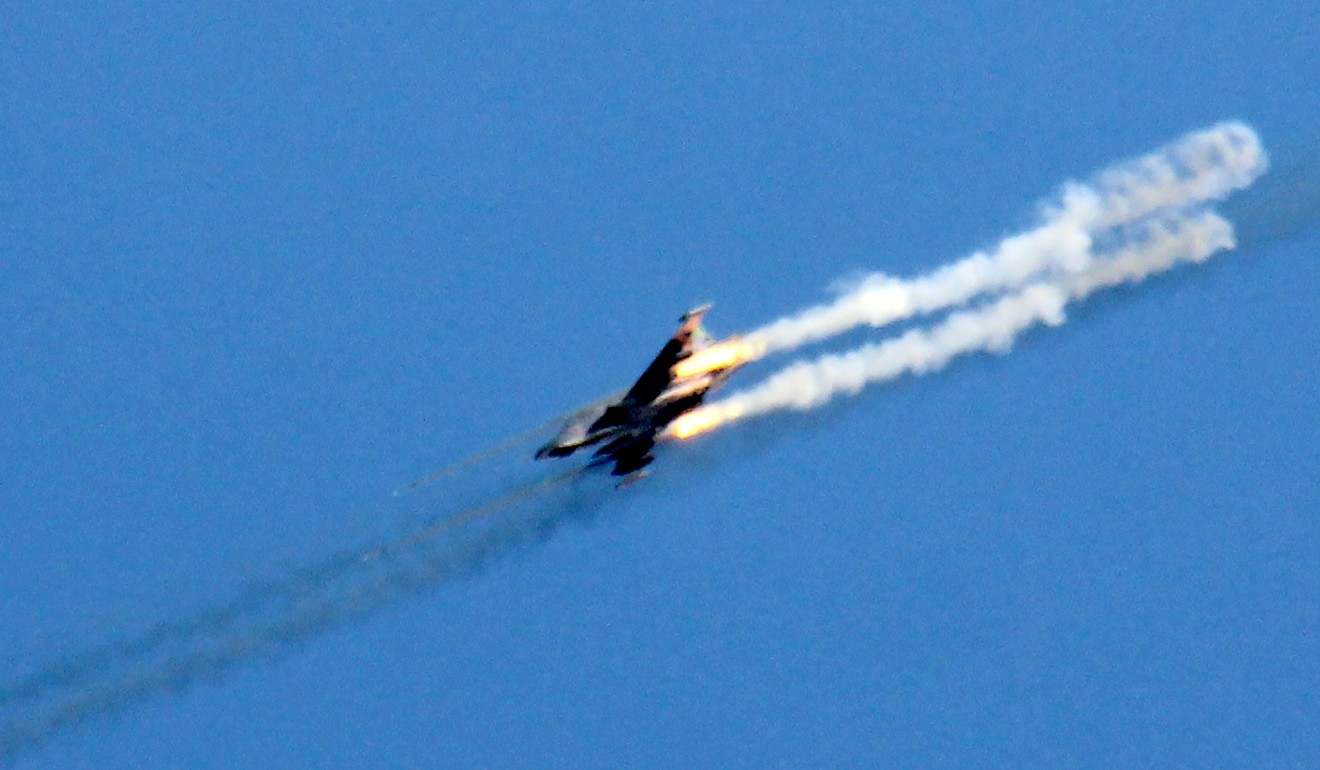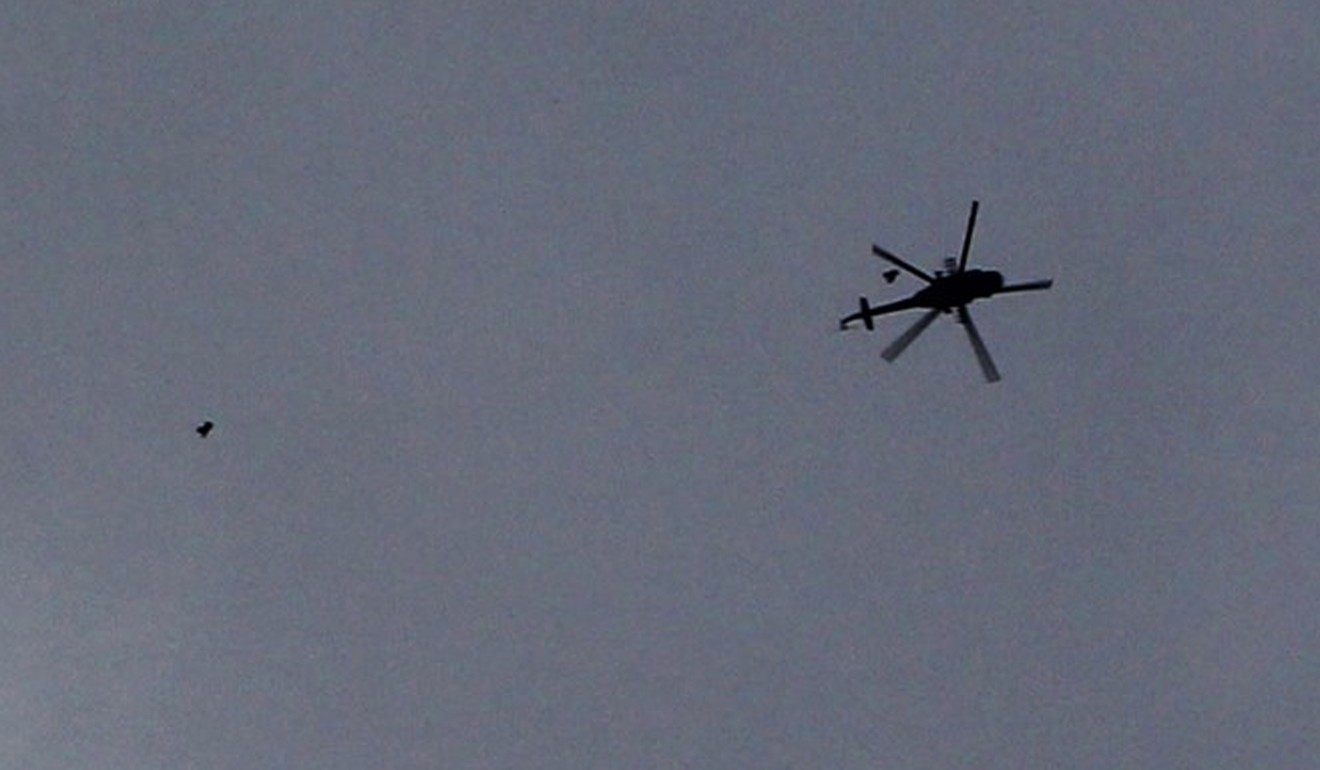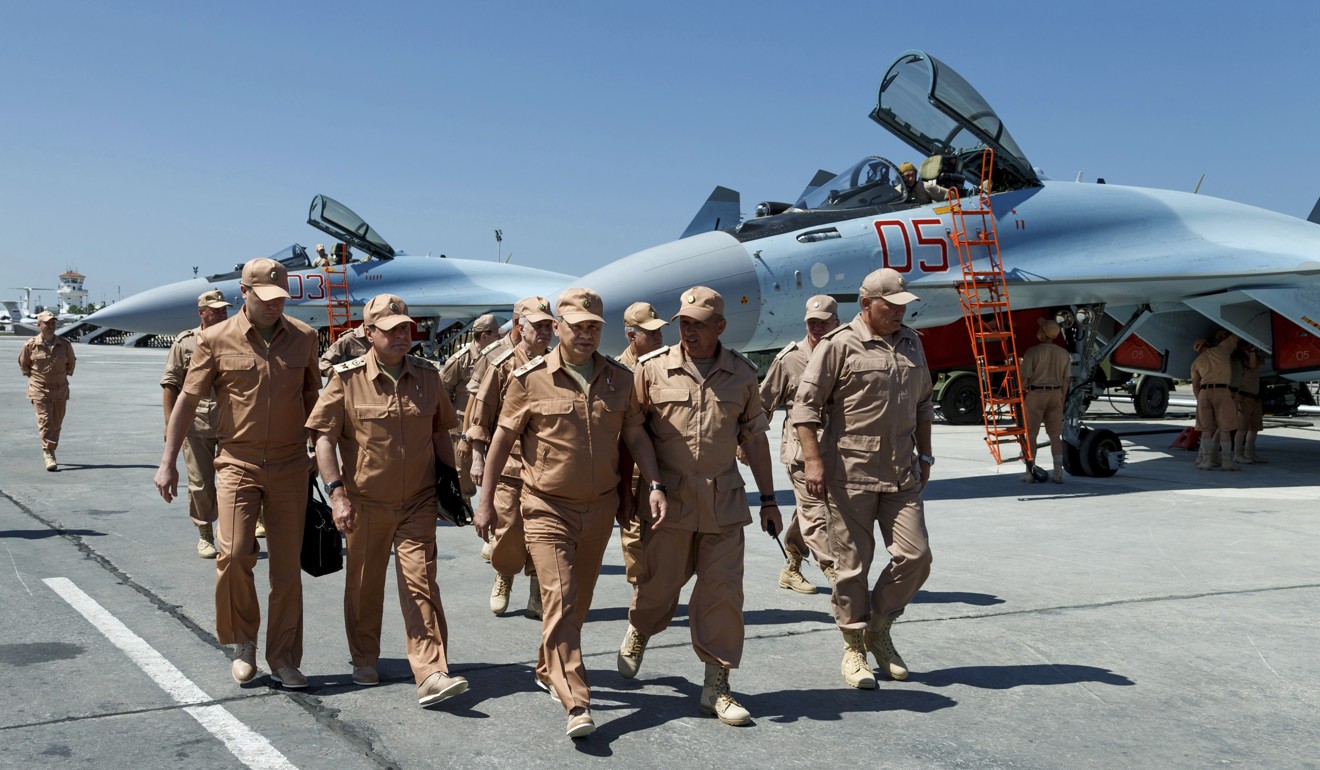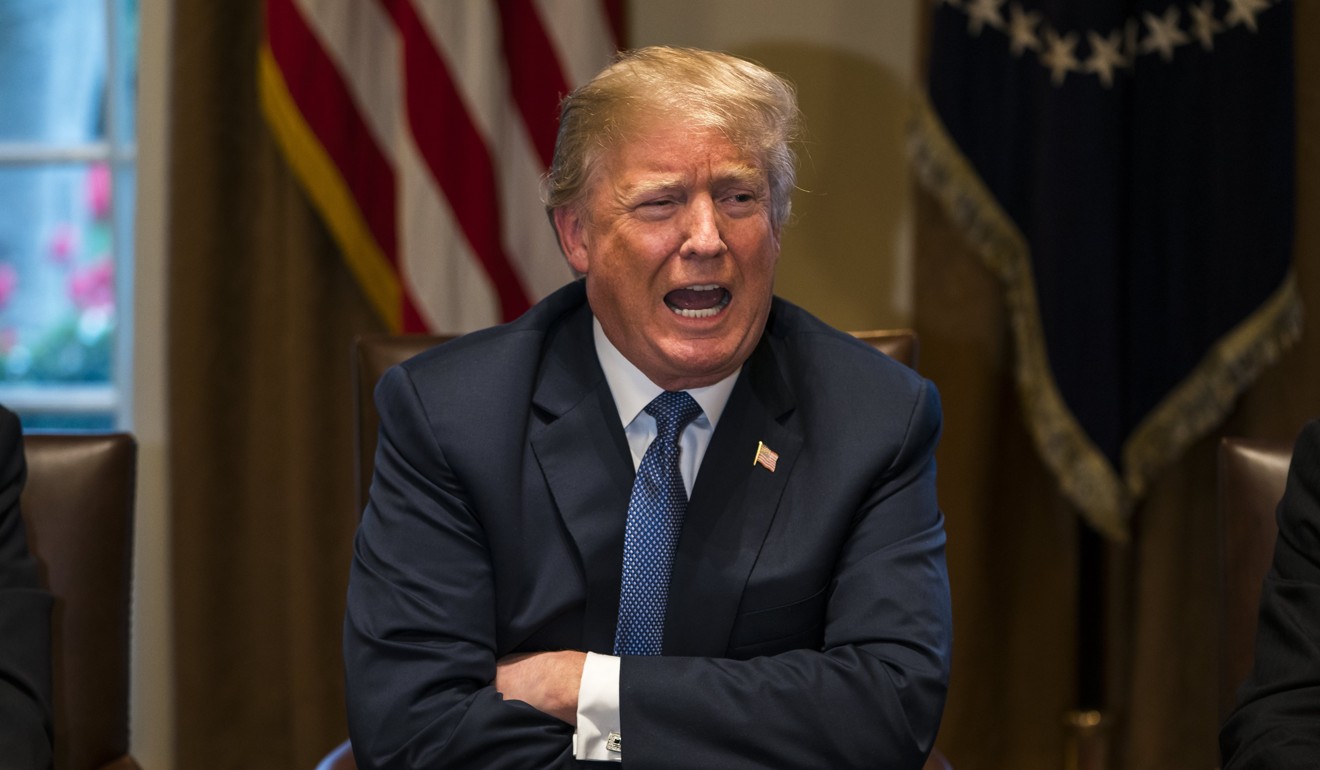
Analysis | Destroying Syria’s air force an option for Donald Trump – but he risks Russia retaliation
Trying to wipe out Assad’s air power would come with risks, not least the potential fallout from any Russian deaths
US President Donald Trump ordered an attack on Syria a year ago in response to a chemical attack, resulting in 59 Tomahawk cruise missiles hitting the Shayrat airbase.
Given that it failed to deter the Syrian president, Bashar al-Assad, and regime forces from using chemical weapons again, Trump must now decide whether to launch a more punitive strike in the wake of the suspected gas attack in Douma on Saturday.
Other reports challenged this, however, saying Syrian aircraft were taking off from the base only hours later.
If Trump needs to send a stronger message this time, one option is to completely destroy Syria’s air force.
Having fought against Syria regularly over the past 70 years, including frequent raids in the past two years, the Israeli air force knows Syria’s strength better than anyone else.

An Israeli military analyst, Reuven Ben-Shalom, who spent 25 years in the Israeli Defence Forces, was reluctant to sound boastful but could not help in the end but describe Syria’s military capability as “a joke”.
To take just one indicator, Syria has 15,000 personnel in its air force, according to the Military Balance published by the London-based International Institute for Strategic Studies; Israel has 34,000 and the US 316,000.
Ben-Shalom said Israel’s military superiority would ensure it could destroy the Syrian air force. And US military superiority is many times greater than Israel’s, he added. But he added a crucial caveat: the potential confrontation was not just about military capability.
“The main issue is the umbrella the Russians have given the Syrians. The Russians are inside Syria.” The risk for the US would be an attack that would start a third world war, he said.
A defence analyst, Jeremy Binnie, the Middle East editor at Jane’s by IHS Markit, said: “The US Navy could potentially use Tomahawk cruise missiles to do a larger version of last year’s retaliatory strike on al-Shayrat airbase, if it has a sufficient number of destroyers and attack submarines within range.”
Likely targets would be aircraft and other assets that are difficult to repair, rather than the bases themselves.
Binnie said it would seem fair to say the US could carry out a strike four times as large as the one a year ago.

“So if the al-Shayrat strike destroyed 20 per cent of the Syrian air force, as claimed, then one four times as large would in theory finish it off, but then you would have to factor in any improvement in Syrian air defences.
At the same time, there is a risk that if you say you have destroyed the Syrian air force, but miss a few aircraft, you might look a bit silly when they are seen flying.”
Syria has been reinforced by the Russian S-400 missile system. Earlier this year, Syria claimed to have brought down an Israeli F-16 fighter that crashed while returning from a raid.
But Ben-Shalom, a lieutenant-colonel in the Israeli reserves, pointed out things go wrong in war and the downing of the plane had probably been due to a combination of events. In the end, Israel retained “overwhelming domination” of the skies, he said.

The biggest risk facing Trump is not Russian air defence systems but killing Russians.
“I would once again beseech you to refrain from the plans that you’re currently developing,” Moscow’s UN envoy Vasily Nebenzia said on Tuesday.
A strike that hits Russian assets in the region – even if unintentionally – could result in a dangerous game of one-upsmanship, potentially dragging the US further into a conflict the president wants to leave.
“The most important thing about a US strike is the potential for Russian casualties as a result of any military activity there,” said Ayham Kamel, head of Middle East and North Africa research at Eurasia Group.
“That is where there’s a risk of an escalatory cycle that would be much more meaningful than attacking Assad’s forces.”

French President Emmanuel Macron, who has been coordinating closely with Washington, said he would decide on a response “in the coming days.”
“Our decision will not target allies of the regime or attack anyone but rather attack the regime’s chemical capabilities,” he said, insisting he did “not want an escalation”.
In addition to the Tomahawk, one weapon that likely would be launched from outside Syrian airspace by the B-1B bomber is the Jassm cruise missile.
It can also be dropped by the F-15E fighter. Of the roughly 20 nations taking part in Islamic State campaign in Syria and Iraq, only a handful of nations including the UK, France and Germany have aircraft capable of launching such long-range strike weapons.
In addition to French aircraft and cruise missiles, an attack would probably involve MQ-9 Reaper drones dropping weapons and F-22 stealth fighters based in the region.

The jets have flown missions into Syria and Iraq since 2015 and are capable of dropping GPS-guided Jdam bombs. Those jets have previously dropped bombs on targets in the region including buildings and weapons caches.
B-1B Lancer bombers capable of launching precision-guided weapons returned last month to the Middle East and would be available for an attack.
Depending on the depth and breath of a plan, B-2 bombers with the 509th Bomb Wing based in Missouri could be used to open an attack, destroying Syrian air defences and other targets.
Two B-2 bombers flying a 30-hour round-trip mission from Missouri in January 2017 attacked Islamic State training camps in Libya, dropping GPS-guided bombs.
The camp had been monitored before the strikes by Reapers, a tactic that could replicated over Syria.
Additional reporting by Bloomberg

